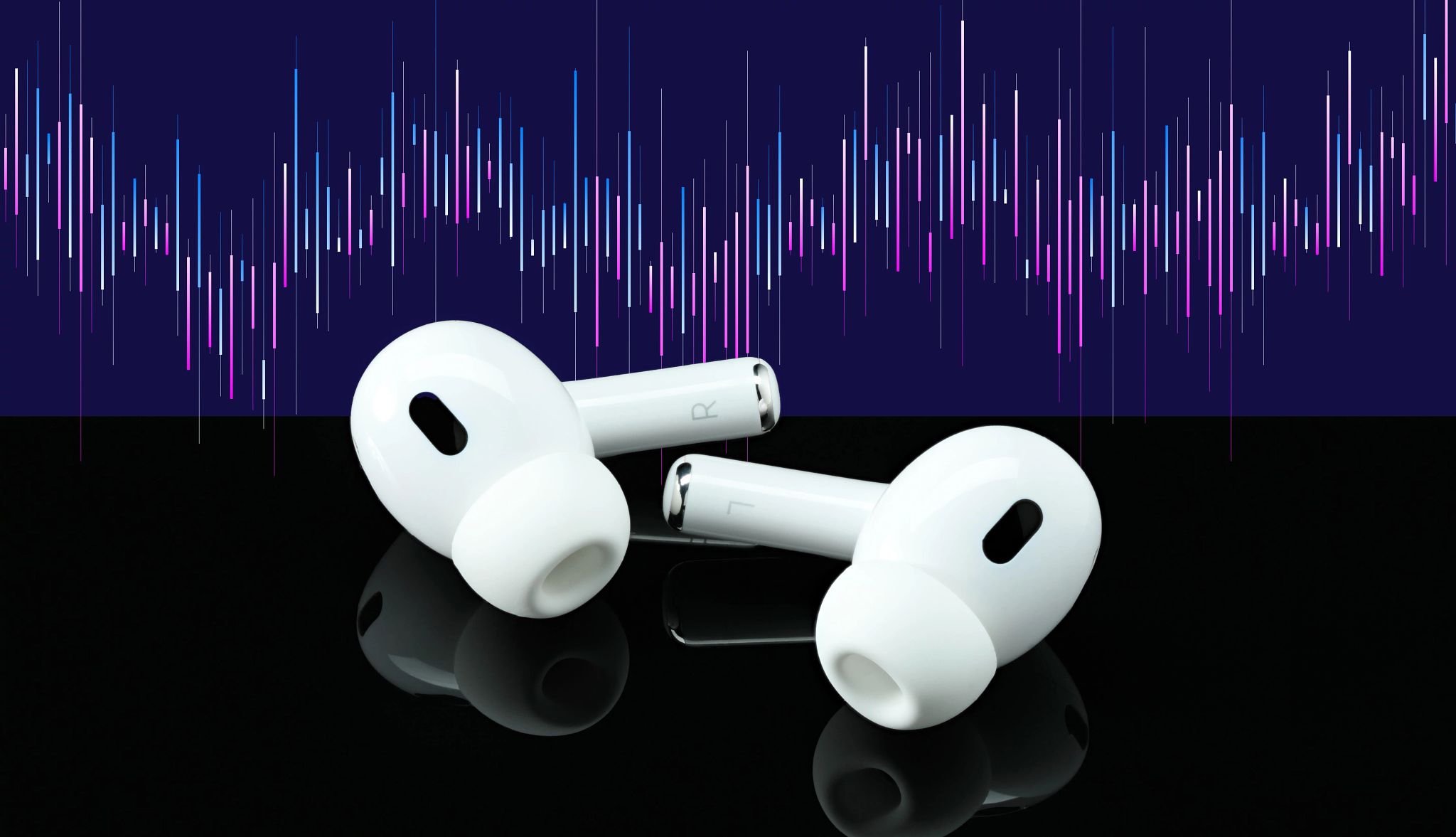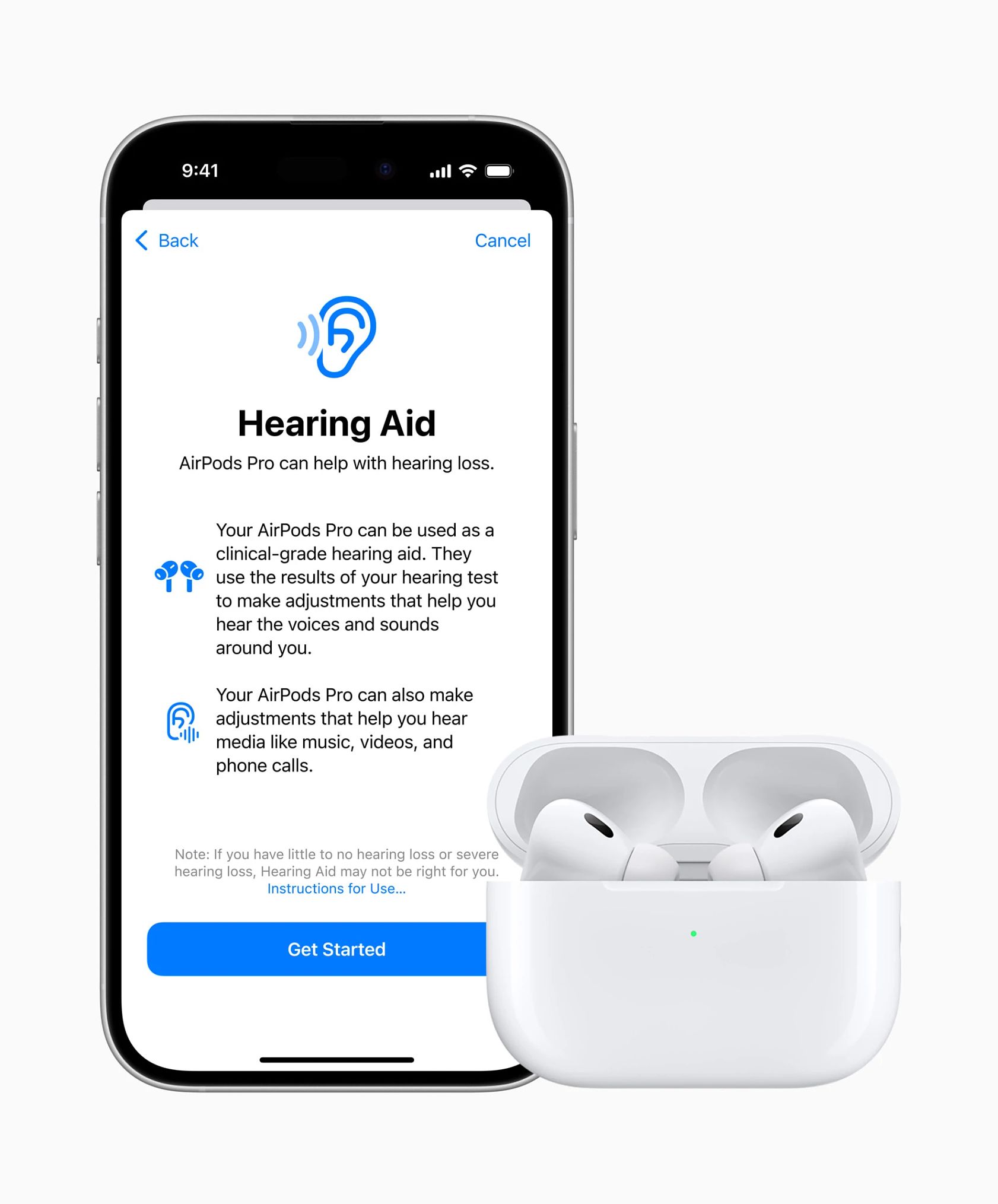AARP Hearing Center


Some Apple AirPod earbuds, which people of all ages use to listen to music and podcasts or chat over the phone, soon will have a new purpose — to help adults hear better.
On Thursday, the Food and Drug Administration (FDA) gave its approval to the first-ever over-the-counter (OTC) hearing aid software, which will make that happen for Apple’s $249 AirPods Pro 2. The OK came three days after Apple announced the model would be able to double as a clinical-grade OTC hearing aid.


AARP Membership— $12 for your first year when you sign up for Automatic Renewal
Get instant access to members-only products and hundreds of discounts, a free second membership, and a subscription to AARP the Magazine.
The FDA put OTC hearing aid regulations in place in October 2022 to help lower prices for hearing aids overall and to simplify the buying process for consumers. Such hearing aids are sold online or at retail without requiring a prescription from an audiologist or hearing professional.
As with other OTC hearing aids, these AirPods are for people with mild or moderate hearing loss, not those with more severe hearing issues. Apple’s hearing aid feature will arrive this fall in a software update for the earbuds and as part of the iOS 18 update for the iPhone.
“If we’re now entering a world where people are talking in a restaurant and putting on AirPods and overcoming the background noise in the situation they need, we are really changing the face of … hearing augmentation,” says audiologist Nicholas Salvatore Reed, associate professor at the Optimal Aging Institute at NYU Langone Medical Center and coauthor of AARP’s Hearing Loss for Dummies.
Hearing loss often goes untreated
Hearing loss is a chronic issue that typically worsens with age. More than 1.5 billion people globally live with some form of hearing loss, according to the World Health Organization, the vast majority with mild to moderate problems.


In the United States, about 1 in 3 people ages 65 to 74 have some sort of hearing loss. That rises to nearly half for adults 75 and older, according to the National Institutes of Health (NIH).
And yet very few people get treated, much less wear hearing aids that might help them. Last year, the National Council on Aging reported that just 1 in 6 Americans with hearing loss wear hearing aids.
Untreated hearing loss can increase the risks of dementia.
About 4 in 5 U.S. adults have not had their hearing checked in the past five years, according to Apple. And 75 percent of people who participated in an Apple Hearing Study conducted in collaboration with the University of Michigan School of Public Health and the World Health Organization and were diagnosed with hearing loss haven’t received the help they need.































































More From AARP
AARP Hearing Center
Hearing Aids, Hearing Test And Hearing Loss Tips and InformationApple, Google, Samsung Usher in Era of AI Smartphone
Balance future promise of AI with new phones’ expenseHow to Convince a Partner to Get a Hearing Aid
Dr. Adam’s advice for encouraging a loved one to get their hearing testedRecommended for You